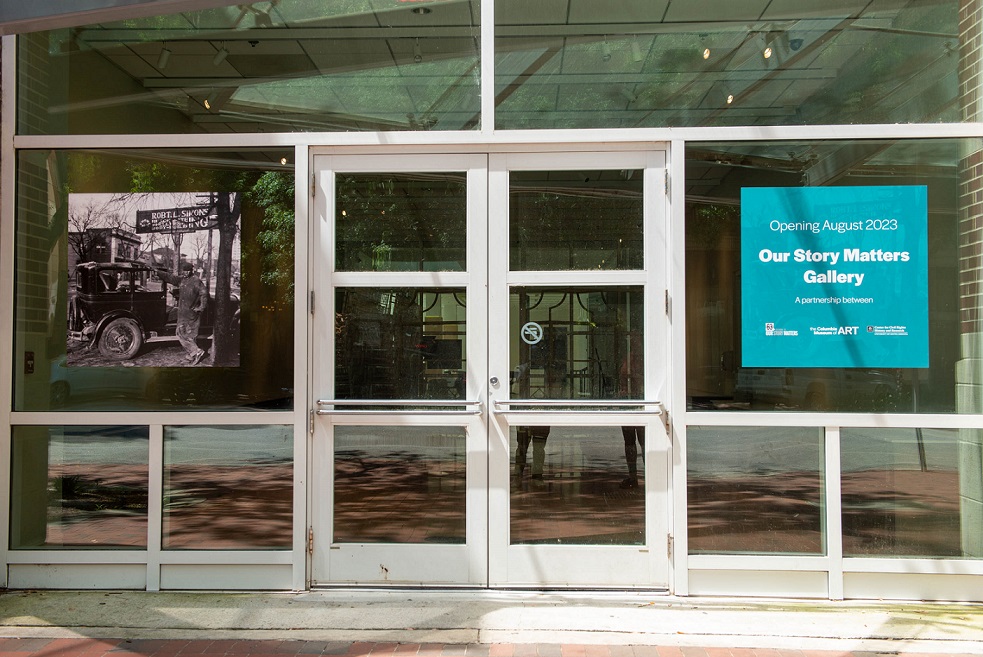Columbia SC 63, USC Center for Civil Rights History and Research, and Columbia Museum of Art announce partnership
April 26, 2023Our Story Matters Gallery set to open August 2023
The Columbia Museum of Art (CMA), the USC Center for Civil Rights History and Research (CRC), and Columbia SC 63: Our Story Matters have partnered to create the “Our Story Matters Gallery,” opening in August 2023 at the CMA in the space formerly occupied by the museum’s gift shop. Through visual arts and storytelling, the Our Story Matters Gallery will provide Columbia’s residents and tourists an opportunity to learn about the city’s extensive and nationally important civil rights history through dynamic exhibitions and interactive experiences in a space with regular public hours, free admission, and access directly from Main Street.

The Our Story Matters Gallery will feature preeminent exhibitions on African American life and culture in Columbia from Reconstruction through the student activism of the 1960s and 1970s and will include space for field trips, meetings, and community discussions. The gallery will also be a stop for Main Street tours of Civil Rights Era history led by Columbia SC 63.
“We have great anticipation for this latest collaboration with the talented team of the Columbia Museum of Art,” said Dr. Bobby Donaldson, executive director of the Center for Civil Rights History and Research and lead historian of Columbia SC 63. “The space is ideal for welcoming visitors, and we have exciting plans for an engaging, meaningful exhibition and an array of innovative programming. The exhibition — Intersections on Main Street: African American Life in Columbia — will immerse visitors in the vibrant African American history and culture located in the heart of the city’s downtown corridor.”
Intersections on Main Street: African American Life in Columbia shares the stories of African American life in Columbia from Reconstruction through the 1970s, using a wide variety of materials including photographs, newspaper clippings, maps, and historical artifacts that highlight people’s lives and experiences in downtown Columbia. Images from the studio of famed photographer Richard Samuel Roberts form the core of this exhibition focused on African American history, resilience, and ingenuity.
Visitors will learn more about the city through a variety of historical artifacts, oral histories, art, and reproductions. In conjunction with the CMA and Columbia SC 63, the CRC will host public programs, professional development opportunities for educators, school group activities, and more. Throughout the year, the gallery will host special family and community days where participants can delve deeper into the rich history of Main Street, Washington Street, and the wider Columbia community.
“I believe in the power of people, partnerships, and the visual arts to bring communities together,” said CMA Executive Director Della Watkins. “We are excited about this opportunity to partner with mission-aligned organizations to interact and engage in Columbia’s shared history.”
Through this partnership, these organizations aim to spark powerful connections, understanding, and healing through art and storytelling, illuminating the historical and present-day struggle for freedom and justice in Columbia.
“The City of Columbia is delighted to hear about the continued collaboration between the University of South Carolina Center for Civil Rights History and Research, Columbia SC 63, and the Columbia Museum of Art, as they spotlight the history of African Americans in Columbia,” said Columbia Mayor Daniel Rickenmann. “Under the direction of Dr. Bobby Donaldson, Columbia SC 63 and the University of South Carolina Center for Civil Rights History and Research have been integral parts of our community as they tell the history and unsung stories of African Americans who helped shape our vibrant communities and our City into what it is today. I’m eagerly awaiting the launch of this newest exhibition that will tell the essential story of African American life in downtown Columbia, specifically Main Street, and how vital that story is to help shape and grow our downtown spaces for the future of our City.”

















